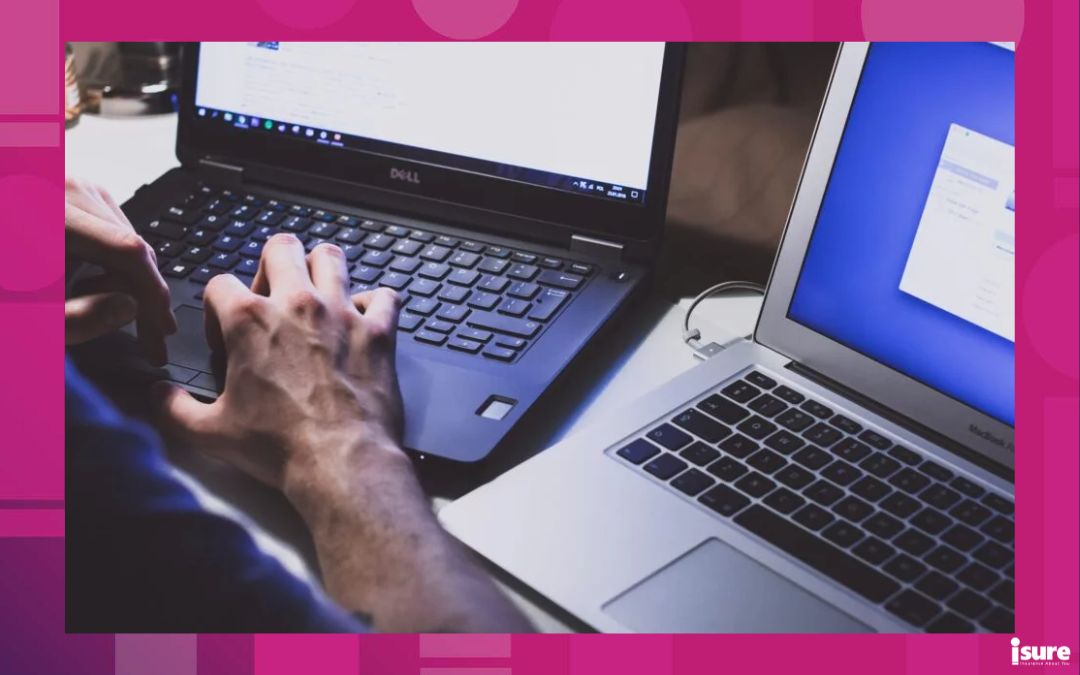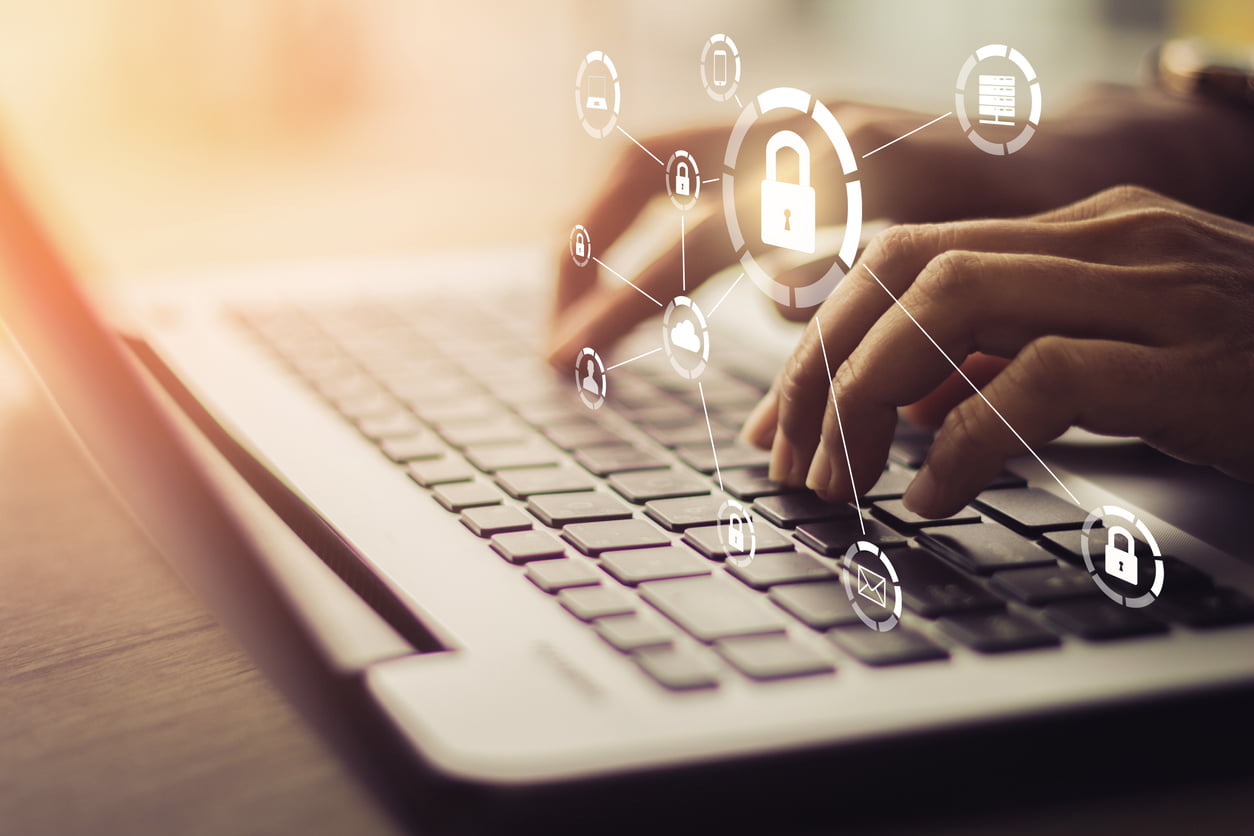The COVID-19 pandemic has changed the work habits of millions of people across the globe. Instead of commuting each day to an office, they worked from their kitchen tables and living room couches. When working remotely, your employees need to access the same internal services, applications and information that they would have access to in the office. However, even though vaccines are rolled out and employers are beginning to call workers back to the office, many remote employees are looking for a more flexible work arrangement. They’re looking to travel to the office on days when collaboration and meetings are taking place and to work from home when they’re more focused on solo work. Therefore, it’s essential you ensure you continue to protect yourself against cyber threats and security breaches that extend beyond your office doors. We’ve rounded up 13 ways to ensure that you are helping to protect remote employees from cyber threats but first, let’s take a look at cyber security.
Cyber security
Cyber attacks have become one of the greatest risks for most businesses and even some individuals. Cyber criminals are targeting vulnerable companies and stealing information or taking over their systems altogether, making cyber security very important.
While working at the office, you and your employees are usually using a network that has antivirus software, firewalls and automatic online backup capabilities. This makes it difficult for any malware to access your device or for any personal information to be uncovered. Since the onset of the COVID-19 pandemic, it has been reported that the initial 25% of Canadian organizations going entirely remote has increased to 85 percent going remote with at least half of their workforce. As such, it’s important to keep up with appropriate cybersecurity measures.
Personal devices used when working from home might not come with the same level of security as on your employer’s in-office equipment. If you decide to have your staff work remotely, then it’s important to keep cyber safety in mind. That means protecting your personal devices and data, just like you would in the workplace. Here are 13 ways on how to do so:
1. Keep close contact with your remote employees
It’s smart to stay on top of company communications. Be sure to relay important email updates regarding policy changes, ranging from work hours and travel to employees. Encourage open dialogue regarding concerns with new procedures.
2. Always update your company’s tech toolbox
Your cybersecurity tools are designed to protect data and help keep devices safer when working from home. Cybercriminals have an interest in both, whether you’re working in the office or at home. Ensure that these tools include the updated versions of firewall and antivirus protection, along with security features like VPN and two-factor authentication.
3. Invest in security software for remote employees
It’s far easier for viruses and malware to gum up your laptop, desktop and tablet if these devices aren’t protected by antivirus software. Suggesting that remote employees install security software will keep work-related materials from potentially affecting their personal devices. It can also help protect their devices against phishing attempts and tech support scams by providing network protection.
4. Boost the security of their home router
If employees are working remotely even one or two days a week, they should strengthen the security of their home router and the Wi-Fi network it controls. Creating a strong password for a Wi-Fi network, as well as changing the Wi-Fi network’s SSID or name, will make it more challenging for hackers and cybercriminals to identify and gain access to any work devices they have connected to it. If someone uses their Wi-Fi network to commit a crime or send spam, law enforcement could trace that activity to their account!
5. Keep team meetings safe for remote employees
Online video conferencing programs have become a key way for remote employees and employers to communicate, collaborate and meet during the pandemic. However, it’s important to remember to:
- Boost the security of any video conferencing software in use.
- Be sure to have employees set up a unique meeting ID for every conference you schedule.
- Set up a waiting room area for your video conferences. This way, you can screen participants before letting them into your conference.
- Providing passwords for your video conferences is another safety measure.
- Make sure there is only one host for your meeting and make sure this host is the only person who can control screen-sharing, video options, mute options and letting guests into the meeting.
6. Control the impulse to improvise
Your employer likely has vetted its collaboration tools and makes sure they’re secure. However, you can’t be sure a quick-fix tool your employee has downloaded has the same protections. They could introduce a software program with a security flaw accidentally, allowing unauthorized individuals to access company data or any personal data you have on that device.
7. Stay current on software updates and patches
Always encourage employees to action reminders that software updates are available for their computer, laptop, tablet or mobile device. Updates help patch security flaws and help protect data, and can also add new features to your devices and remove outdated ones.
8. Remote employees should keep their VPN turned on
A VPN — short for Virtual Private Network — can help protect the data you send and receive while you work from home. A VPN can provide a direct connection to the organization’s normal applications, similar to if your employee was connected directly to your organization’s network. This can hide the user’s IP address, encrypt data transfers in transit and mask the user’s location. VPN can provide a secure link between employees and businesses by encrypting data.
9. Turn on Two-Factor Authentication (2FA)
Enabling two-factor authentication for important websites is another key security move when your employees are working more often from home. Even if cybercriminals know your username and password credentials, they couldn’t easily access your account without knowing the code sent to the phone.
When employees log onto your company’s online employee portal, your company’s website can send a code to their phone before they can access your accounts.
10. Beware of phishing emails
Cybercriminals sometimes send fake emails with dangerous links to employees. If the attachment or embedded link is opened, they are likely to download malware onto the device. Have employees immediately report the phishing attempt to you, as others may have received the same phishing email.
11. Purchase a webcam cover and consider security software
Smart cybercriminals can hijack a webcam, spying on people as they work. However, a webcam cover will block laptop cameras and protect privacy at home.
Note: The security software may also be able to alert you of attempts to access your webcam and block anyone who isn’t authorized to access it.
12. Be careful of public Wi-Fi
Working from the local coffee shop can provide a change of scenery from being in the house or apartment. However, public Wi-Fi is notoriously unsecure. Hackers can connect to that same network and may be able to spy on your employee’s online activity when relying on public Wi-Fi. Also, make sure to password protect and lock laptops, smartphones and other devices while being used in public places.
13. Don’t forget to back up important information
Make sure employees know to back up all important work reports, data, files and research. This will prevent a possible malware attack on a home laptop to wipe away those documents worked on for months. Make sure you provide employees with a companywide cloud back-up site provided by tech companies, such as Dropbox, idrive or Backblaze.
In the past few years, more and more companies around the world have embraced both remote and flexible ways of working. Be careful to stay on top of cyber security measures for those that have returned to the office and those employees that have chosen flex hours. It is also important to make sure your insurance is up-to-date to accommodate your changing needs. Speak with one of our isure representatives if you have questions about both cyber insurance and cyber liability insurance.





